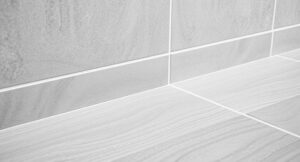Reinforcement plays a crucial role in modern construction, ensuring that concrete structures are strong, durable, and capable of withstanding various stresses. Since concrete alone lacks sufficient tensile strength, reinforcement materials like steel, fiber, and mesh are incorporated to enhance its performance. This blog explores different types of reinforcement, their importance, and key considerations for their proper use in construction projects.
Table of Contents
ToggleWhat is Reinforcement in Construction?
Reinforcement in construction refers to the use of materials, primarily steel bars or mesh, to strengthen and enhance the tensile properties of concrete structures. Since concrete is strong in compression but weak in tension, reinforcement ensures the structure can withstand various stresses and loads, increasing durability and longevity.
Types of Reinforcement in Construction
1. Steel Reinforcement (Rebars)
Steel reinforcement bars, commonly called rebars, are the most widely used reinforcement material in construction. They are embedded within concrete to provide tensile strength, which concrete lacks on its own. Rebars come in different grades and types, including mild steel bars and high-yield strength deformed (HYSD) bars, such as TMT (Thermo-Mechanically Treated) bars. These bars help prevent cracks and increase the structural stability of buildings, bridges, and foundations.
2. Wire Mesh Reinforcement
Wire mesh reinforcement consists of a grid of thin steel wires arranged in a crisscross pattern. It is commonly used in slabs, pavements, driveways, and small construction elements where additional tensile strength is needed but full-sized rebars are unnecessary. This type of reinforcement helps control shrinkage cracks and distributes loads evenly across the structure.
3. Fiber Reinforcement
Fiber reinforcement involves mixing small synthetic, glass, or steel fibers into concrete to enhance its durability and crack resistance. This method is commonly used in industrial flooring, tunnel linings, and earthquake-resistant structures. Different types of fiber reinforcement include:
Steel Fibers – Increase tensile strength and resistance to cracking.
Glass Fibers – Improve impact resistance and prevent shrinkage cracks.
Synthetic Fibers (Polypropylene, Nylon, etc.) – Reduce water absorption and improve durability.
4. Prestressed Reinforcement
Prestressed reinforcement involves pre-tensioning or post-tensioning steel cables within the concrete before the load is applied. This method is commonly used in bridges, large-span buildings, and parking structures where high strength and flexibility are required.
Pre-tensioned reinforcement – Steel cables are stretched before the concrete is poured, then released after it hardens.
Post-tensioned reinforcement – Steel cables are inserted into ducts within the concrete and tensioned after the concrete has set.
This technique reduces cracking and increases load-bearing capacity.
5. Carbon Fiber Reinforcement
Carbon fiber reinforcement is a lightweight, high-strength alternative to steel reinforcement. It is used in specialized applications such as airports, skyscrapers, and earthquake-resistant structures. Carbon fiber reinforcement offers corrosion resistance, high tensile strength, and longevity, making it ideal for high-performance structures.
Each type of reinforcement plays a crucial role in improving the durability, flexibility, and strength of concrete structures. The choice of reinforcement depends on factors like structural requirements, environmental conditions, and budget constraints.
Importance of Reinforcement in Construction
1. Enhances Strength and Durability
Concrete alone is strong in compression but weak in tension. Reinforcement materials like steel rebars, wire mesh, or fibers improve the tensile strength of concrete, making structures capable of withstanding heavy loads, temperature changes, and external forces such as wind and earthquakes. Reinforced concrete is widely used in high-rise buildings, bridges, and tunnels where structural integrity is critical.
2. Prevents Cracks and Structural Failure
Without reinforcement, concrete can develop cracks due to tension and bending forces, leading to potential failure over time. Reinforcement materials help distribute loads more effectively, reducing stress concentrations that can cause cracking. For example, stirrups in beams prevent shear cracks, and wire mesh reinforcement in slabs controls shrinkage cracks.
3. Increases Structural Longevity
A well-reinforced structure has a longer lifespan because it is more resistant to wear and tear, environmental damage, and heavy usage. Properly placed reinforcement prevents early deterioration, reducing maintenance costs over time. This is especially crucial for bridges, industrial facilities, and high-traffic areas where durability is essential.
4. Provides Design Flexibility
Reinforcement allows architects and engineers to create complex and innovative designs without compromising strength and stability. Modern construction projects, such as curved facades, large-span bridges, and earthquake-resistant skyscrapers, rely on reinforced concrete to achieve aesthetic appeal while maintaining structural integrity. Prestressed reinforcement techniques also enable lighter, thinner, and more efficient structures.
Reinforcement in Construction Examples
Reinforced Concrete in Bridges – Bridges are one of the best examples of reinforcement in construction because they are subjected to continuous loads, temperature fluctuations, and environmental forces such as wind, water currents, and earthquakes.
High-Rise Buildings – Skyscrapers and tall structures require reinforcement to withstand wind forces, seismic activity, and their own weight. Steel rebars and shear walls are commonly used.
Dams – Dams experience immense hydrostatic pressure from water, making reinforced concrete essential for durability and safety. Fiber reinforcement and prestressed concrete are often used.
Tunnels – Underground tunnels require reinforcement to resist soil pressure and external loads. Steel mesh and fiber reinforcement help prevent collapses.
Foundations for Large Structures – Reinforced concrete footings and piles provide stability and prevent settlement, ensuring the structure remains upright and secure.
Points to Remember for Reinforcement in Concrete
-
Proper Placement – Ensure rebars or meshes are positioned correctly according to design specifications.
-
Adequate Covering – Maintain the required concrete cover to prevent corrosion and enhance durability.
-
Correct Lap Length – Overlapping reinforcement bars at the right length ensures structural continuity.
-
Secure Tying and Spacing – Reinforcement must be tied securely and spaced evenly to maintain integrity.
-
Use Quality Materials – High-quality reinforcement materials prevent premature failure and ensure long-term stability.
-
Check for Rust and Damage – Ensure that reinforcement bars are free from rust, dirt, and oil before installation.
-
Adhere to Building Codes – Follow local and international construction standards for safe and reliable reinforcement practices.
Build Stronger with SmartScale House Design
At SmartScale House Design, we ensure that every structure we design follows the best reinforcement practices for long-lasting and resilient construction. Whether you’re building a home, commercial space, or industrial facility, our expert team can help you create safe and sturdy designs tailored to your needs. Contact us today for innovative and structurally sound house designs!
Conclusion
Reinforcement is an essential aspect of construction, ensuring that structures remain strong, safe, and durable for years. By selecting the right type of reinforcement and following best practices, builders and engineers can create buildings that withstand environmental and structural stresses effectively. Whether constructing a residential home, a commercial complex, or a large-scale infrastructure project, proper reinforcement techniques are key to long-term success.
Frequently Asked Questions
1. What are the 4 types of reinforcement in construction?
The four main types of reinforcement in construction are:
Steel reinforcement (rebars)
Wire mesh reinforcement
Fiber reinforcement
Prestressed reinforcement
2. What is RCC reinforcement?
RCC (Reinforced Cement Concrete) reinforcement refers to the use of steel bars (rebars) or mesh within concrete to improve its tensile strength, making it suitable for construction applications like buildings, bridges, and foundations.
3. What are 3 common types of reinforcement used in concrete?
The three common types of reinforcement used in concrete are:
Steel rebars
Wire mesh reinforcement
Fiber reinforcement
4. Which steel is used in RCC?
The most commonly used steel in RCC is mild steel (MS) bars and high-yield strength deformed (HYSD) bars, such as TMT (Thermo-Mechanically Treated) bars, which provide high strength and durability.
5. What are stirrups in beams?
Stirrups are closed-loop steel bars used in beams to provide lateral reinforcement, preventing shear failure and maintaining the integrity of the structure.







